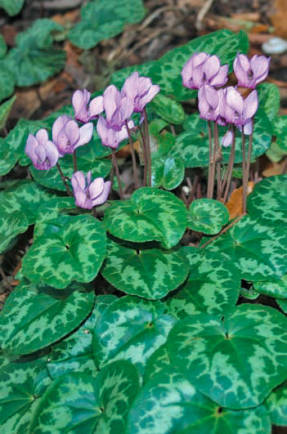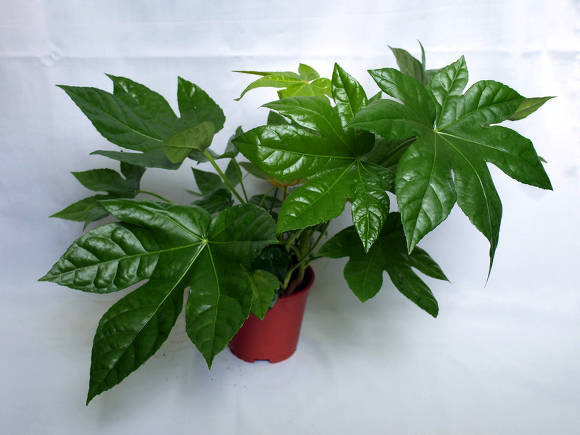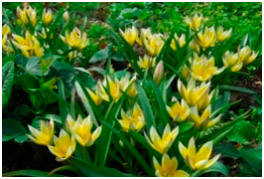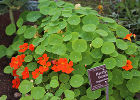 |
The fig tree is one of the oldest plants cultivated on earth for over 5000 years and is known under various names: fig, Adam's tree, fig tree, fig, wine berry.
For the first time, the fig tree was introduced into the culture in the mountainous region of Caria in Asia Minor, and then spread throughout Western Asia, North Africa and other subtropical regions of the Earth. In Egyptian burials, bas-reliefs depicting a collection of figs were found, made 2500 BC. And in ancient Greece, the best fig tree plants even received their own names. This was noted in the 4th century. BC Theophrastus, and Homer's Odysseus in the 24th canto of the Odyssey, referring to his father, says:
“You yourself, donating trees, named each one by name:
You gave me thirteen pears that have bloomed,
ten selected apple trees and forty fig trees ”.
Our ancestors accepted the fig tree as a gift from God. When the people led by Moses reached the borders of the promised land, the prophet sent a group of people ahead to find out if this land was fertile. Forty days later, the scouts appeared with juicy figs in their hands.
In ancient Greece, the fig was dedicated to Demeter and Dionysus. In ancient Rome, figs were also revered, because, according to legend, it was he who helped the founder of Rome, Romulus, to stay alive. The ancestors of today's Romans worshiped the fig tree, in the days of the orgy, the admirers of Bacchus, hot with wine, paid homage to God, raised fig branches over their heads.
This plant came to America with the European conquerors and has long been associated with the local population with their bad deeds. In the capital of Peru, Lima, in the courtyard of the presidential palace, which for some time belonged to the conqueror of the Inca state, Francisco Pizarro, for many years, figs grew, which, according to legend, Pizarro came out of a half-dried seedling brought from his homeland. Subsequently, the plant turned into a large beautiful tree ... The locals did not touch the tree and did not eat its fruits, for in the eyes of people it seemed to take on the disgusting features of its owner - cruelty and treachery, although they willingly showed it to tourists.
Currently, the leading place in the production of figs is occupied by the Mediterranean countries, where about 80% of the world production of fruits is concentrated. In addition, figs are grown on an industrial scale in countries such as China, Japan, India, Afghanistan; South Africa, Australia, South and North America.
Figs and Caprifigs
 |
Fig belongs to the Mulberry family (Mogaseae), to which the mulberry also belongs. Rod Ficus (Ficus), of which the fig is a representative, has about 1000 species, common in the tropical and subtropical zones of the entire globe. A significant part of the species belongs to evergreens, which for the most part are very decorative and some of them can be found in our winter gardens and on window sills, but only a few produce edible fruits. These include Ficusafganistanica Warb. - Afghan figs and FicuscaricaL. - common figs.
Common fig - diploid form (with a set of chromosomes 2n = 26). It is a deciduous plant, with sparse branches, more often a multi-stemmed tree, or less often a branched shrub (in more arid climates). In the wild, it reaches 10-12 m in height, in a cultured arid eon - 4-6 m. The diameter of the wide-spreading, spherical crown of the plant reaches 10-12 m. Young shoots are juicy, fleshy, with light bark.
Afghan figs is a spontaneously formed triploid (with a set of chromosomes n = 39 instead of 26). It is a short, stocky tree with numerous side short shoots extending from the branches at right angles. Leaves are round-cordate, five-lobed, strongly double-dissected, thin, light green, curled, coarsely toothed at the edges.Compound fruits are solitary, axillary, pear-shaped or round, in the wild on short legs, small, up to 1 cm, and in culture - up to 4 cm in diameter, on long legs.
Figs have males and females (figs) or monoecious plants (capryphigi), whose task is to provide figs with pollen. True, in fairness, it is worth noting that there are varieties that form parthenocarpic fruits (without pollination). The fig inflorescence is very specific, it is located in the leaf axil singly on a short stalk, called "syconium" and is a closed hollow fleshy receptacle, on the inner surface of which small flowers are located. The number of flowers in one inflorescence ranges from 800 to 1500 pcs. Fig flowers are small, unisexual.
Several generations of inflorescences are formed on fig plants. On female plants - 2 generations of figs, spring and summer. On male plants - 3 generations of kapryphig, spring, summer and autumn-winter.
The life span of plants is 50-70 years. Vegetatively propagated plants begin to bear fruit for 3-4 years. The productive period begins at 6-8 years and lasts up to 35-50 years.
 |
Lots, lots of sugar and calories
Fresh fig fruits contain up to 20% sugars, including 90% monosaccharides and 10% sucrose, up to 30-36% dry matter, 1-2% proteins, which contain 17 amino acids, of which 8 are irreplaceable, and up to 2% of pectin substances. The content of organic acids is low - 0.2-0.6%, malic (up to 40%), citric, pyruvic, tartaric and a number of other acids prevail. By the content of minerals (up to 3%) figs take one of the leading places among fruit raw materials. It contains a wide range of macro- and microelements - sodium, potassium, calcium, magnesium, phosphorus, iron, copper, sulfur and others. The set of vitamins is also impressive - rutin (60-80 mg%), vitamin PP (0.5 mg%), vitamins B1 (80-100 mg%), B2 (82 mg%), carotenoids, tocopherols, pantothenic and folic acids. But there is very little vitamin C in it - 5 mg%. Furocoumarins (in green ones) and anthocyanin glycosides (in mature ones): sambucyanin and sambucyanide are found in fig fruit seedlings.
 |
Dry fruits contain up to 80% dry matter, up to 65-75% sugars. Dried figs in terms of calorie content (214 kcal / 100 g) occupy one of the first places among various types of dried fruits.
The peel of the fruit, stalks, leaves and other parts of the fig plant contain milky juice, which contains water, rubber, resin, sugar, acids, albumin, as well as a complex of proteolytic enzymes - ficin.
The bark of the trunk contains glycosides (up to 3.06%) and saponins, furocoumarins and resins (up to 1.2%). Milky juice includes up to 12% rubber, 1.5% resins, gum. The leaves contain furocoumarins (in dry - up to 2%) psoralen and bergapten, which have a photosensitizing effect, like hogweed. In addition, resinous substances (up to 4%), organic acids, rutin (0.1%) and vitamin C (up to 300 mg%) are present.
Figs for gourmands ...
Figs are used for fresh consumption. Fresh fruits have high taste properties and are well absorbed by the body. However, poor keeping quality and low transportability limit the possibility of fresh use. You can freeze the fruits, but we sell them in pieces and are quite expensive, so this advice is relevant only for residents of the Black Sea coast.
 |
Mostly, figs are still used in dried form. Dried fruits are perfectly stored - up to 1 year or more, and are in great demand on the world market. Dried figs have been known for a long time. In ancient Rome, it was popular along with bread and formed the basis of the winter diet of both the poor and the rich enough. Dried figs are now an important food staple in countries such as Turkey and Egypt.
Figs are an important raw material for the food industry; they are used to prepare jams, marmalades, jams, marshmallows, and compotes.Fig flour is used in the confectionery industryas an addition to cakes, pastries, sweets. Low quality dried figs are processed into alcohol.
Delicious and healthy dishes with figs - Fig sauce, Figs in red wine with yoghurt, Figs with blue cheese and nuts.
... and doctors
Fig fruits and leaves have long been usedas a medicine in traditional medicine. Fresh figs are recommended for the rapid restoration of cardiac activity with a weakening of the heart muscle, as a hematopoietic agent for anemia, and also for reducing excess acidity in gastrointestinal diseases. It is used for hypokalemia and for diseases of the cardiovascular system, when potassium is also needed.
Fig fruit and condensed fruit juice are used for cardiovascular diseases, with anemia and loss of strength. The thick extract is a dark brown gruel with an aromatic odor and pleasant taste. It has a mild diuretic effect. So, for example, in patients with decompensation of the cardiovascular system, urination increased up to 50%. The recommended dose is 100 g once a day (in the morning). Since the drug is very nutritious and has no side effects, it can be taken for a long time.
Fig fruit also has an expectorant and softening effect. In Renaissance Europe there was a whole collection of fruits, used for "chest diseases". In our modern understanding, these are bronchitis, tracheitis and even tuberculosis and pneumonia. This nutritional and expectorant composition included dry fruits of grapes, figs, ziziphus and dates in equal parts. The calorie content of this mixture, as you can see, is huge, but with debilitating and prolonged diseases, this is exactly what is needed.
In Central Asia, they are boiled with milk and used for coughs, whooping cough, and also as an emollient for chest pains, throat pains and colds. French medicine uses cough syrup... It is prepared as follows: 500 g of figs are boiled in 1 liter of water. After they have boiled, add 250 g of honey and (optional) 250 ml of good cognac. Everything is mixed and stored in the refrigerator in a well-sealed container. Apply 1 tablespoon 3-4 times a day for coughs and other colds.
And here is the recipe for "coffee" from figs, which is prepared as follows: powdered dry fruits are brewed like real coffee at the rate of 1-2 teaspoons per 1 glass of water. They drink warm in small sips for colds. This drink got its name for its coffee-like color. The invigorating effect here, of course, is not provided by the chemical composition, but there are quite a lot of calories.
With gastritis in Serbian folk medicine, the following recipe is recommended: For 1 liter of olive oil, take 20 g of St. John's wort and 10 pcs. fig fruits (chop), leave for 40 days; in the morning, drink the protein of one egg, and after half an hour, take a tablespoon of the prepared mixture.
In medicine, preparations are used based on dried fruits, primarily prunes and figs, which improve intestinal motility in elderly and senile people suffering from constipation on this basis. The combined preparation "Regulax" was produced in the German Democratic Republic in the form of 8.4 g fruit cubes containing the pulp of fig fruits, senna leaves and fruits, and vaseline oil. The domestic complex preparation "Kafiol" is produced in the form of dark brown briquettes with a peculiar fruity smell and taste. This preparation also contains the pulp of figs and plums, leaves and fruits of senna (cassia holly) and liquid paraffin. It has a laxative effect and is prescribed internally for constipation, especially persistent, 1-2 briquettes per night, and the briquettes are chewed and washed down with a little water. In children's medical practice, fig syrup is used as a mild laxative.
At home, for constipation, the following recipe is recommended. Take 0.5 kg of dried figs and plums, pour 3 liters of water, boil until it evaporates to 2.5 liters; drink 100 g before and after meals and eat several plums and pieces of figs. The rest of the broth and thickening should be taken a little during the day and the next day. Option: boil 0.5 kg of figs for 30 minutes in 1.5 liters of water, drink this broth every 2 hours for 100 g, and eat figs.
Contraindications... Figs contain a lot of fiber, so you should not use it in case of acute inflammatory diseases of the gastrointestinal tract, and because of sugar - in case of diabetes mellitus. It is also contraindicated for gout, since it contains a lot of oxalic acid (up to 100 mg%).
The diuretic properties of figs have been known for a long time. It has been used to improve digestion and as a means of increasing urination, especially in gout, which is associated with impaired uric acid metabolism.
At present, decoctions and preserves from figs are also taken in folk medicine as a diaphoretic and antipyretic affinity. A decoction of stems, boiled in milk or in water (2 tablespoons of dry stems per 1 glass of milk or water), is considered a good remedy for gargling with sore throat, hoarseness and dry cough, and as an expectorant - for oral administration with tracheitis and bronchitis. The same broth is drunk for half a glass 2-4 times a day for diseases of the kidneys and urinary tract. Sometimes it is advised to drink a decoction of figs for gastritis, constipation. Outwardly, the broth is used for poultices with abscesses, flux, etc. Sometimes, fresh or soaked dried fruits are applied to the abscesses to accelerate ripening.
 |
Steamed fruit is an excellent compress for abscess on the gums and flux. Similarly, half of the steamed fruit can be applied to any suppuration, boil or carbuncle.
Recently, figs have been widely used in the pharmaceutical industry. "Fitsin" has a fibrinolytic effect and is used to treat thrombosis. From the milky juice of the leaves, the drug "Furoden" is obtained, which is recommended for the treatment of leukoderma.
Infusion of fig leaves helps with bronchial asthma and kidney disease. An aqueous decoction from the leaves of young branches is used as an antihelminthic agent, and fresh fig leaves are applied to boils. In the folk medicine of Armenia, the tincture of leaves on vodka is drunk for malaria.
 |
In medical practice, the drug "Psoberan" from fig leaves is approved for use. It contains a mixture of furocoumarins and has a photosensitizing ability (increases the sensitivity of the skin to ultraviolet rays), increasing the formation of pigments in the skin. It is prescribed for the treatment of skin diseases - vitiligo and alopecia areata. Produced in tablets and in the form of an alcohol solution.
In Armenian folk medicine, for coughs, as well as for diarrhea, they use a decoction of dried fig leaves. In Georgia, a decoction of a mixture of fig leaves and nettle is given for dysentery. Fig milky juice is used to heal wounds and remove acne. Fig seeds are known as a laxative - for constipation, a single dose of 10-15 g of seeds is prescribed.
Milky fig juice the ancients used it as a very strong laxative and anthelmintic. It contains enzymes that can severely poison the life of our "parasitic" companions in the intestines.









